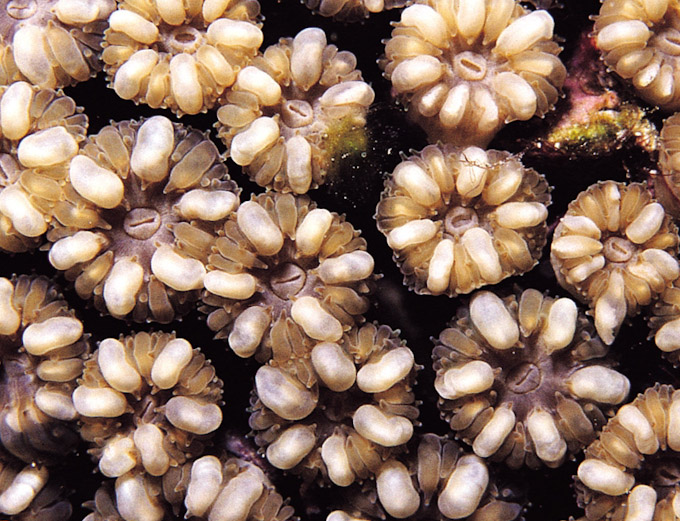
Blastomussa loyae was first described from the Red Sea in 1978 as a separate species from Blastomussa merleti due to the separated walls and ‘irregular voids’ in the corallites of colonies. Blastomussa loyae was first discovered growing in abundance alongside B. merleti but although the species was first accepted as distinct, Stephen Cairns and Charles Veron subsequently classified B. loyae as a Red Sea variant. New analysis of Red Sea Blastomussa loyae skeletons by Karl Kleemann and Christian Baal of the University of Vienna is making the case for B. loyae as a valid species again.

The authors of the new paper published in the Journal of the Marine Biological Association of the United Kingdom state that “the observed features in B. loyae specimens as specified and figured [in the paper], and the co-occurrence with true B. merleti on the same knoll warrant the species’ re-establishment”. These couple images from Veron’s Corals of the World show photographs of Red Sea Blastomussa with living polyps that resemble the skeletons and descriptions of Blastomussa loyae. But what do we know about coral taxonomy, Matthew Tibbits probably has some Blastomussa loyae skeletons sitting on his desk waiting analysis of their microstructure to tell us it’s actually related to Caulastrea.




